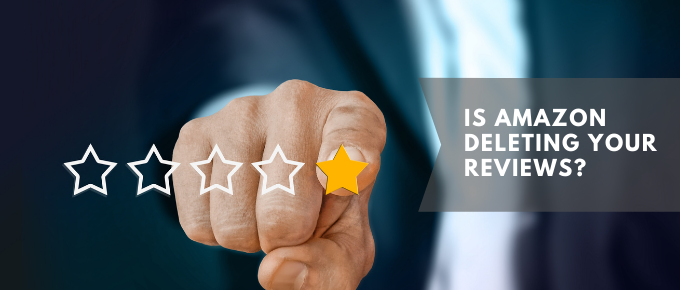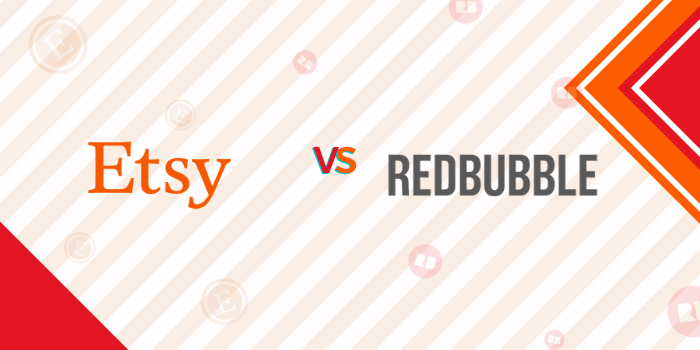
Reviews are the social currency of eCommerce. In a marketplace as big as Amazon, they are a huge deal for buyers and sellers.
Reviews are hard-earned customer feedback that signals product quality to potential buyers. When they disappear, it becomes more difficult for sellers to make a sale.
Wiped reviews are frustrating to the buyer who has taken the time to leave a thoughtful review.
It’s even more frustrating with a company as operationally secretive as Amazon. The eCommerce giant rarely shares what they are doing. You are not sure what’s happened or why it has.
In this article, I’ve detailed everything we know so far as gathered from communities of sellers and buyers who have had a similar experience. You will learn why it’s happening and what you can do to avoid (and fix) it.
The details might be a bit complicated, and I recommend you read the whole thing to get a full picture. But if you are in a hurry, here are the cliff notes:
- Amazon is deleting reviews. It is also blocking and limiting them
- It’s because you or the reviewer broke the rules
- Or Amazon noticed suspicious activity
- You can’t undo it, but you can prevent it.
Also Read: What Does “Review Hidden By Sensitivity Filter” Mean On Amazon & How To Fix It?
Amazon is Deleting Your Reviews
image source: Christian Wiediger
Yes, Amazon is deleting your reviews. The company has acknowledged it has a fake reviews problem and has revised its policies to that effect.
Multiple sellers report seeing their sales numbers grow, but their number of reviews decreases. This has been particularly confusing for rule-abiding sellers who request reviews from shoppers via Amazon’s email feedback tool.
Buyers have also reported going through their review history and seeing fewer reviews than they used to.
However, deletion is not the only way Amazon curates old and new reviews.
Amazon is also blocking them
Even if your product reviews are not getting deleted, sellers might still be losing reviews, and they wouldn’t know. Unless the customer tells the seller they don’t have review access through another channel.
In a rare disclosure, the company revealed in 2021 that it blocked more than 200 million fake reviews from being posted. It’s not unreasonable to think some of those are authentic reviews.
There are still no specifics on how long it takes for Amazon to lift the review block on a product. Some sellers report seven days, and others 1-3 days. Also, after lifting the ban, Amazon reinstated the block on some products.
Amazon limits reviews too
Other times, the curation is on the number of reviews buyers can leave on a product per day. It differs for verified and unverified reviews, but most users say their limit kicks in at 3-5 reviews per day.
Separately, the company has five non-verified purchase reviews each week, from 12 AM UTC on Sunday to 11:59 PM UTC on Saturday. There’s no limit on verified purchases.
Whether it’s deleting, blocking, or limiting, it makes no difference to the stress it has on sellers and their business. For top reviewers, it becomes harder to enjoy a favorite pastime.
The more important question is, why is any of this happening?
Why is Amazon Deleting Your Reviews?
image source: Daniel Holland
Sure, to remove fake reviews, but one would expect Amazon’s algorithm to be efficient at detecting genuine reviews. And when it’s unsure, leave the reviews since their A10 algorithm values the number of reviews highly when judging seller authority.
So why is this happening? The Amazon community has developed a few theories. Here’s why your reviews are getting deleted or blocked from the seller and buyer’s perspective.
For Sellers
Too many unverified reviews in your product listing
If Amazon is deleting your reviews, they might have flagged your listing for a high amount of unverified reviews.
Verified reviews are for products Amazon confirmed were bought on their site and without a deep discount. Verified feedback has a logo that Amazon uses to discourage sellers from buying reviews.
This does not mean that unverified reviews are fake, but rather Amazon cannot prove they are.
If there is a disproportionate number of unverified reviews compared to the number of verified reviews, Amazon will flag your account.
Also Read: Way To Remove Bad Reviews On Amazon
A lot of reviews (or sales) out of the blue
image source: Jess Bailey
To the Amazon system, this could be the sign of bots flooding a product listing. These bots are known to rephrase the same review multiple times on the same product.
Also, Amazon could initiate a review block if a large number of people close to you all leave 5-star reviews within a short period. The company sees this as bot behavior or considers them untrustworthy reviews.
The average review rate is around 1-2% of purchases, and a sudden uptick triggers a block. The same thing happens if the company detects higher sales in a short time.
Unfortunately, this is not an exact science. A viral marketing video could spur a sudden increase in sales, and reviews from those sales can help stabilize the business.
But bots remain the primary culprits for now.
Also, in the initial great review purge of 2018, Amazon used a static number instead of a percentage of sales for its algorithm. Many sellers confirm the percentage of sales is now the primary factor, but since we can never be sure, this is worth noting.
Explore: How To Get More Reviews On Your Amazon Products?
Multiple reviews with suspicious wording
Again, Amazon believes this could be bots flooding a product listing. But those are not the only reason the company might delete your reviews for suspicious wording.
image source: Kenny Eliason
An objective review might also get deleted or blocked if the content is written in unsupported languages. That is, a reviewer cannot publish a review in French on the English website.
There’s also repetitive text, nonsense and gibberish, profanity, and reviews that reveal personal information. You can read the official list of unacceptable content here.
So, as a seller, your product’s genuine reviews might be deleted if the algorithm determines they break content rules.
All three issues are part of what Amazon considers “unusual reviewing behavior.” The exact definition of what that means remains elusive. And not even Seller Support can give an accurate answer.
Check Out: Best Amazon Feedback Tools & Review Management Software
For Buyers (Reviewers)
Even when you’ve done everything right as a seller, Amazon might be deleting your reviews because of what your reviewers did.
Not many reviewers are up-to-date with Amazon’s content guidelines. Even an innocent review could trigger a block or deletion.o
Here are the possible causes I’ve found so far for reviewers.
Too many unverified reviews
If you’ve left too many unverified reviews on different products, Amazon could flag your account for suspicious activity.
Again, unverified means the Seattle behemoth cannot determine whether you made the purchase on the site and didn’t receive an unusually generous discount.
If you have a habit of buying a product from a local store or another website and leaving a review on Amazon, this is an unverifiable review.
image source: RoseBox
From the company’s point of view, it doesn’t know if you bought the exact product and at a similar price point to the on-site listing. Thus, your review is likely to be unhelpful to Amazon customers.
Amazon—and users—want authentic, unbiased reviews on the platform and unverified reviews are the opposite of that.
But what number is too many? We don’t know for sure, but reviews on several varieties of the same item in a short period will trigger suspicion.
Off the books refunds for reviewed products
In Before Times, Amazon allowed reviewers to post a review for items they got for free. That has been banned, but some merchants are working around this by offering off the books refunds for reviews.
This is an incentivized review. It also in the same category has paid reviews, which was rampant on the platform pre-2016 and remains a problem.
Amazon can read your review history. As it continues cleaning up its site, the company is deleting questionable reviews made by authors who have broken this rule.
In extreme cases, their accounts are also getting banned. This means all the reviews left by these accounts are gone, even if some were legitimate.
Also Read: Best Tools For Amazon FBA Sellers
Multiple “unhelpful” reviews
Your reviews might also be getting deleted because you leave ‘bad reviews,’ even if they are genuine. Amazon deletes your reviews if too many of them are marked unhelpful or have been reported by other customers.
image source: Barefoot
Amazon has a specific description of the type of reviews it wants from authors.
It does not allow reviews that focus on the individual experience of ordering the product, such as the shipping packaging, cost, or speed. Customer service experience, ordering issues, and returns are also unacceptable.
Again, you can read the whole thing here.
How to fix (avoid) it?
Unfortunately for sellers, a lot of things are out of your control. How do you fix a problem if you are not sure what it is? Or worse, the issue has nothing to do with you?
If Amazon deletes your reviews, there’s no fixing it. This might be unfair, but it is the price Amazon sellers have to pay to use the platform.
The best thing to do is to move on and try to get more reviews, and you can avoid future deletions by following these practices –
Also Read: Best Amazon Product Finder & Research Tools
Play by Amazon’s Rules
image source: Vandan Patel
Amazon’s platform, Their rules. Get familiar with their terms of service and avoid slipping into the gray areas.
Don’t be ‘smart.’ If seller accounts are getting flagged for issues they know nothing about, you can bet you will get caught for unethical tactics.
In actionable terms, this means:
- Avoid using coercive phrasing in your feedback emails to convince buyers to leave positive reviews. Don’t try and get negative reviewers to change or remove their reviews either.
- Do not offer incentives for reviews. Either via refunds via PayPal or by doling out massive discounts.
Check Out: Best Amazon Inventory Tools
Space out your review requests
Spacing out your review requests is another way to keep Amazon’s ruthless deletions away. If you use Amazon autoresponders, email, or Messenger to ask for reviews, don’t ask after purchases all at once.
Remember, a spike in review activity can trigger a block or deletion.
A workable approach is to send follow-up emails to 30% of total daily purchases. So if you sell 50 units a day, instead of sending follow-up emails to all 50 customers on the same day, send 15 on the first day.
Then another 15 the following day, 15 the next, and then the final 5.
You don’t have to use this exact breakdown. It’s a guideline, and you can choose the spacing that works best for you. You can also use tools like FeedbackExpress or LandingCube to achieve this.
Sell via multiple channels
image source: seoability.net
Reviews are too critical to your business to only depend on Amazon’s whims. Yes, it is one of the best platforms to sell on and if you want a thriving eCommerce business, listing on Amazon is a no-brainer.
But it doesn’t have to be Amazon alone. Create your own eCommerce-supported website and learn how to drive traffic to it. You only need some of the tools you are probably using already: email marketing, Facebook ads, and social media.
This way, if you lose your Amazon reviews and your traffic dips, there are other channels to sell from.
In addition, with your own channels, you can build deeper connections with customers and become less reliant on standard reviews.
Brand registered sellers or vendors can also use Amazon Vine for safe and great reviews.
Check Out: Best Amazon Keyword Research Tools
What is Amazon Vine?
Amazon Vine is a program that lets a select group of Amazon customers review a product for free in exchange for thoughtful and genuine reviews. Vine members usually receive the products before they are released.
Naturally, there’s a requirement for sellers to access the Vine program, and you can read them all here. Highlights include your product listing having fewer than 30 reviews, having a buyable FBA offer in ‘New’ condition, and a $200 enrollment fee.
A similar alternative is the Early Reviewer Program. For $60, Amazon will try and get reviews on your behalf for a year or until you get five reviews. However, the company has announced plans to shut it down on April 25.
These solutions should help you reduce future product review limits or blocks.
Consumers who want to be good Amazon citizens can also take these specific actions to safeguard their reviews:
Appeal the wipe
image source: Andre Erena
If Amazon wrongly determines you are writing reviews for free or discounted products, or paid reviews, you can appeal.
This is good because while the review scanning system does a great job of catching bad reviewers, there are a lot of reviews. Thousands are published every day, and mistakes will happen.
A promising sign you might have a chance at appeal is if the reviews are gone, but your account is still intact. It means Amazon only suppressed your reviews so that no one can read them.
To appeal, contact team support and provide proof of your honest feedback. If you convince them you are legit, customer support will return all your reviews and feedback.
Explore: Best Amazon Seller Training Courses
Open a new account
If your appeal is denied and your account is removed for good, create a new account to continue writing Amazon reviews.
However, your process can’t be as straightforward as the original. You must ensure the new account has no information that can link you to the old account.
Should Amazon’s system figure out you’re the same person with different email addresses, the new account will be restricted and possibly removed.
When you open a new account:
- Use a fresh browser or clear your cookies and browsing history
- Use a new username and email address
- Use a separate mailing address and payment methods
- Set a new IP address for your browser
Use other channels
image source: Tara Scahill
If you love providing helpful information that informs thousands of other buyers but are still worried about getting flagged, consider doing so via other channels.
One way to do this is to sign up for the brand’s email marketing. Then share information about specific items to the email groups. You can include whatever you want in your reviews without worrying about Amazon’s rigid and opaque rules.
Another alternative is creating your own blog to publish your reviews. This method opens the door to unrestricted content.
It also allows you to develop a following and influence potential customer behavior. So honesty is highly encouraged. Remember, with great power comes great responsibility.
Also Read: Best Amazon Product Launch Service
Final Thoughts
Reviews are essential to eCommerce, and fake ones are an ever-growing cancer. Unfortunately, the currently available tools to fight them often affect innocent buyers and review authors.
If Amazon has wrongly deleted your reviews, there’s not much you can do, but some good can come out of it. Your product’s credibility will increase and help you make more sales.
As a buyer and reviewer, it will help you stay honest, especially when a seller tries to get you to publish a review in exchange for compensation. You will also learn how to write helpful reviews and protect your identity.
I hope you’ve found this helpful. Stay safe.
















